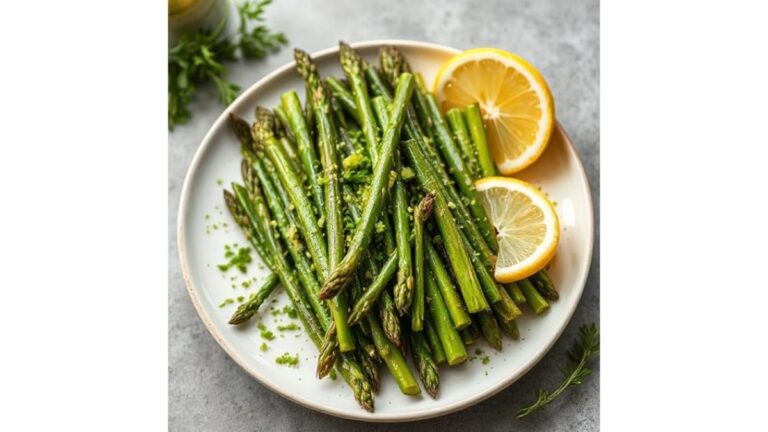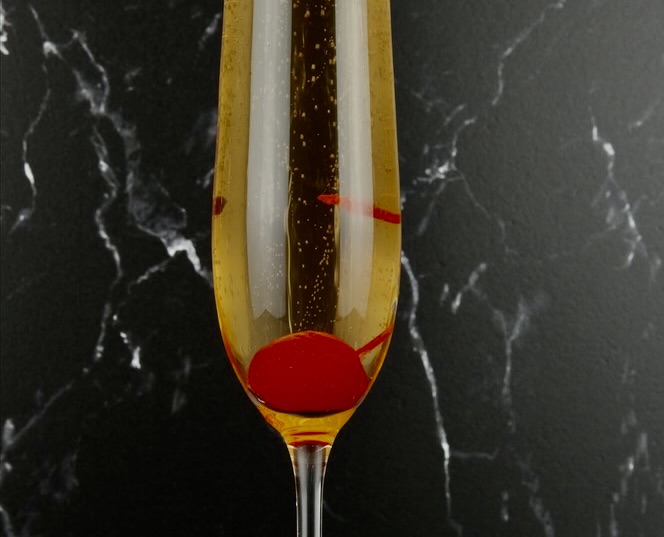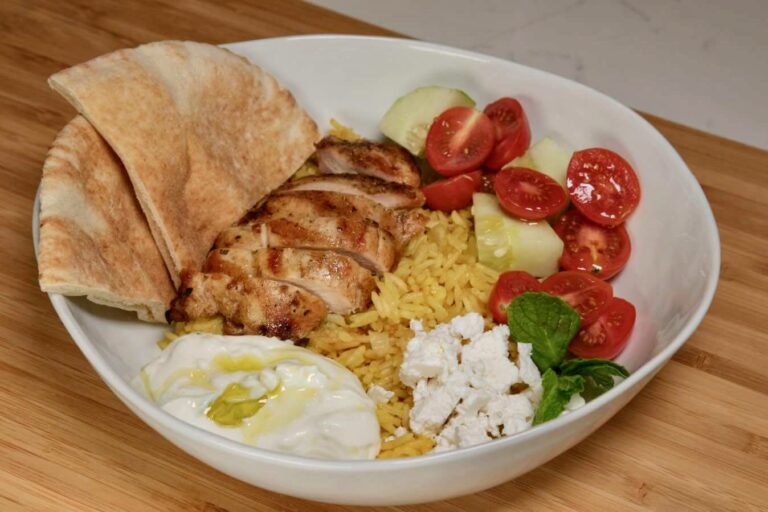Braised Belgian Endives
About this Recipe
By: Rachel
Belgian endives are one of the most delicious vegetables there are. Pleasantly bitter, fresh and crunchy, they can be enjoyed a myriad of ways including raw, roasted, broiled, stir-fried or braised.
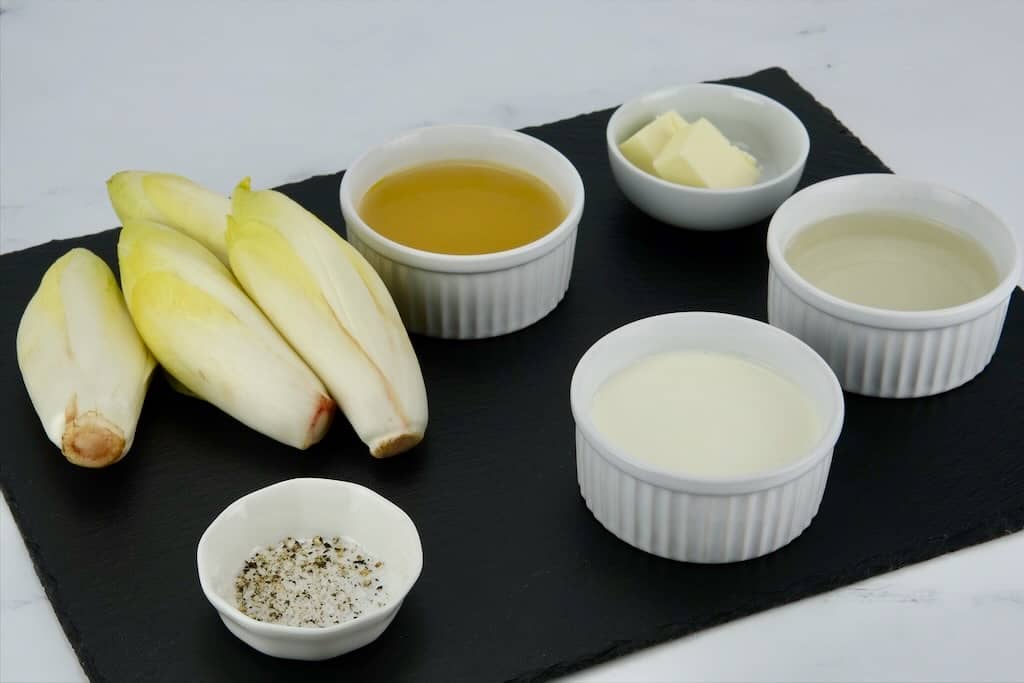
I love to garden, and I especially love to grow my favorite produce. Any delicious fruit or vegetable is bound to be even more delicious when it is grown in your backyard under tender loving care and harvested at its peak, on your plate less than an hour after being plucked from the tree, vine, stalk, or soil in which it grows.
So it was with dismay that I learned, thanks to Gardners’ Path, that one of my favorite vegetables, the Belgian endive, is nearly impossible to cultivate in the home garden. You must prepare a bed of loose, loamy, well-draining soil, completely free of rocks, in which to plant your seeds. Any fluctuation in temperature—unusually warm or cold; too dry, too much rain or moist air—can ruin the crop.
If you are lucky enough for your seeds to germinate, you must force the heads to grow through a two-step process. Once the endives develop a deep taproot, you pull the entire plant (yes, really), and cut off its leaves. The plants must then be relocated to a cool, dark place for about two months, then replanted until mature (its leaves will turn red), anywhere from 80-140 days.
At this point, you delicately remove the entire plant from the soil, roots and all—if you damage a root, the entire plant will rot—and trim both the leaves and the taproot. Then, the plants are relocated to a deep bucket filled with half peat moss, half sand, to a dark and cool area where the temperature is consistently between 32°-36°F (0°-2°C), and the humidity around 95%, for 60 days.
Still with me? After that, you transfer them to a warmer but still-cool place, like a basement, where you must cover them and ensure that they are exposed to no light whatsoever. In about a month, if you have done all of this correctly, you will have produced Belgian endives.
Is it any wonder that they are so expensive? One wonders how they were ever cultivated in the first place. Regardless, I am glad that someone, somewhere along the line, figured it out, since they are absolutely delicious. There are so many ways to prepare endives, but the simple version below is my favorite.
Serve as a side dish, or enjoy on its own as a dinner, when your committed carnivore husband is out of town for work and you get to eat just what you want for a few days.
Braised Belgian Endives
Ingredients
- 4-6 Belgian endives, halved
- 2 tablespoons (30g) unsalted butter
- Kosher salt and freshly ground black pepper
- ½ cup (120mL) dry white wine
- ½ cup (120mL) chicken stock
- ½ cup (120mL) heavy cream
Step by Step Instructions
Step 1
- Heat the butter in a large skillet over medium heat until foamy. Place the endives in the pan cut-side down and allow to cook, undisturbed, for about 5 minutes, or until deeply browned.

Step 2
- Pour in the dry white wine, and turn each endive so the cut side is facing up. Season with salt and pepper, and cook until the wine is nearly evaporated.
Step 3
- Add the chicken stock, and cook for 5-7 minutes, or until the chicken stock has reduced by about half.Add the cream, turn the heat down to medium-low, and allow to simmer gently for about 7 minutes. Serve hot.
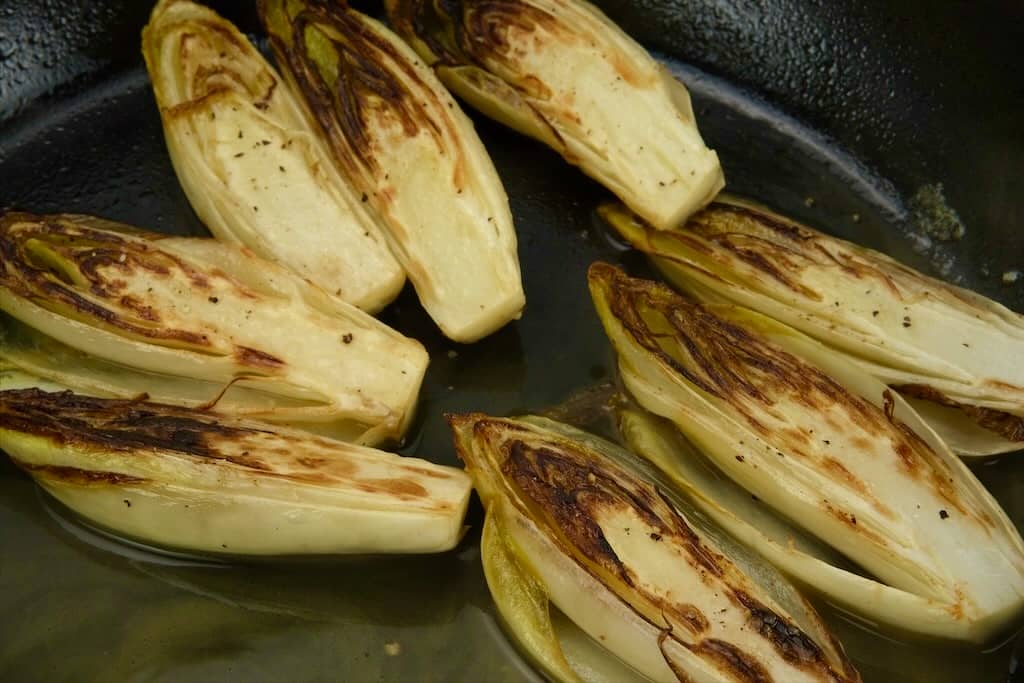
Beverage Pairing
By: Olivia
By braising the endive, its hidden sweetness comes forward to balance out its ever-present bitter qualities. This means the wine pairing can emphasize this subtle sweetness. Mary Taylor Wine Pascal Biotteau Anjou Blanc is the perfect pair! This 100% Chenin Blanc is rich and full-bodied but is still a lively expression of the grape, which is the exact balance of the sweet and bitter of this braised Belgian endive.


